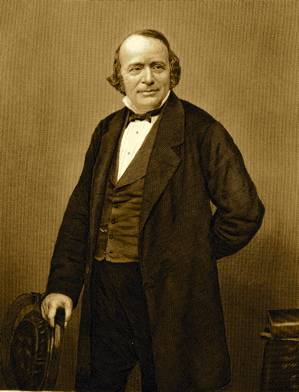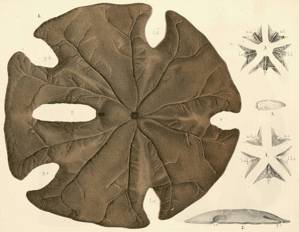Louis Agassiz
Famous BiologistsBiography
|
|
EUGENE M. MCCARTHY, PHD
 Louis Agassiz
Louis Agassiz
Louis Agassiz (May 28, 1807 – December 14, 1873). Swiss-born American zoologist, geologist, and paleontologist, with a special expertise in ichthyology. Founder and first director of Harvard’s Museum of Comparative Zoology. One of the most famous scientists of his day.
|
|
Louis Agassiz was born in the western, French-speaking part of Switzerland. After earning an MD and PhD in Germany, he worked closely with Georges Cuvier in Paris. He was also befriended there by Alexander von Humboldt.
When Cuvier died in 1832, von Humboldt helped Agassiz obtain a professorship back in Switzerland at the University of Neuchâtel, not far from Môtier where Agassiz was born. It was there at Neuchâtel that Agassiz completed his monumental, exquisitely illustrated Recherches sur les poissons fossiles (1833-1843), a book that brought together much of what was then known about fossil fishes and that did much to stimulate future research into extinct life of all kinds. During his years at Neuchâtel , he also completed the Nomenclator Zoologicus (1842-1846), a vast annotated list of all generic names that had been used in zoological nomenclature from the time of Linnaeus.
 Sand dollar. From: Monographies d'Échinodermes vivants et fossiles.
Sand dollar. From: Monographies d'Échinodermes vivants et fossiles.
Raised in the Swiss Alps, his study of glacial erratics and other traces of past glaciation led Agassiz to propose the occurrence of past ice ages. On July 24, 1837, Agassiz stunned attendees of the annual meeting of the Swiss Society of Natural Sciences by passionately arguing for this idea. In his Études sur les glaciers ("Glacier Studies"), he asserted that all of central Europe had once been buried beneath a massive sheet of ice. What he called the Eiszeit (German for Ice Age) is now called the Pleistocene. His realization that past ice ages had actually occurred, placed him in the forefront of geological and paleontological thought. For example, he was the first scientist to realize that the immense prehistoric North American lake now known as Lake Agassiz, was created by glacial dams.
Having traveled to the United States in 1846 to study the natural history of North America, he was offered a professorship at Harvard and decided to settle in Boston. Agassiz became one of the first American biologists of international standing. Through his Harvard years of teaching future prominent scientists, Agassiz had perhaps the greatest influence of any single individual in the 19th century on the future course of American zoology and geology. But he is now remembered primarily for his ice age theories and for his opposition to the theory of natural selection.
In recent literature Agassiz has been criticized for his racist attitudes, but one must remember that racism was more the rule than the exception in the 19th century (in fact, it seems that the amiable Alfred Wallace was the only prominent naturalist of that era that did not express such views). Even Darwin, who is widely revered by biologists today, expressed opinions that would be utterly reprehensible if judged by modern standards. For example, in The Descent of Man (1871, vol. 1), he makes the now outrageous suggestion that blacks are somehow intermediate between civilized human beings and apes: "At some future period, not very distant as measured by centuries, the civilised races of man will almost certainly exterminate and replace throughout the
Contemporaries
of Louis Agassiz:
Alfred Wallace >>
There seems, then, to be no reason to single out Louis Agassiz for reproach in this regard.
Notes:
|
Most shared on Macroevolution.net:
Human Origins: Are we hybrids?
On the Origins of New Forms of Life
Mammalian Hybrids
Cat-rabbit Hybrids: Fact or fiction?
Famous Biologists
Dog-cow Hybrids
Georges Cuvier: A Biography
Prothero: A Rebuttal
Branches of Biology
Dog-fox Hybrids